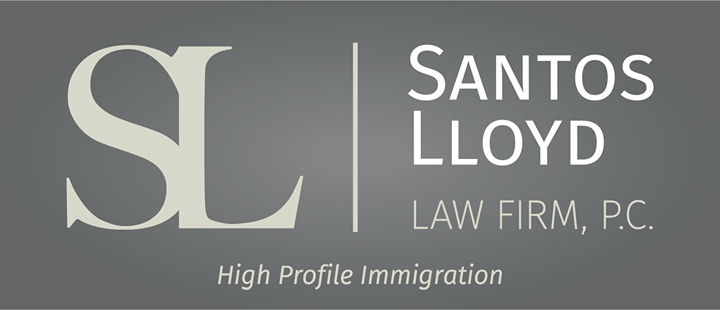Centro Regional ou Investimento Direto para sua Petição EB-5?
Santos Lloyd Law Team • January 9, 2025
Click here to read this article in English
À medida que os efeitos do EB-5 Reform and Integrity Act de 2022 continuam a se desenvolver, essa categoria de visto de imigração tem visto uma popularidade crescente nos últimos meses. Antes de 2022, muitos indivíduos de alto patrimônio líquido evitavam totalmente a categoria EB-5, devido à incerteza generalizada em torno do programa. Não é segredo que a categoria EB-5 é cara, e quem poderia culpar um investidor por hesitar em destinar uma quantia tão significativa de capital em um meio de investimento com supervisão ou transparência limitadas? Com a grande maioria das preocupações sobre o programa tendo sido atenuada pelas disposições do EB-5 Reform and Integrity Act de 2022, que permitiram maior supervisão regulatória, aumentaram os limites de investimento, promoveram maior transparência e até removeram camadas de burocracia, os investidores estão mais uma vez ansiosos para participar deste programa altamente benéfico.
Se você está considerando um investimento financeiro significativo nos Estados Unidos, o programa EB-5 é uma excelente oportunidade não apenas para fazer o investimento, mas também para garantir a residência permanente e, eventualmente, a cidadania dos EUA em troca dessas contribuições. A ideia por trás do programa EB-5 é gerar estímulo econômico para os Estados Unidos, incluindo a criação de um número significativo de oportunidades de emprego para trabalhadores americanos. Os limites de investimento para os valores mínimos de investimento qualificáveis foram projetados com base no estímulo econômico suficiente gerado pelo capital investido. No entanto, com uma grande diferença entre os dois limites de investimento qualificáveis e uma ampla variedade de projetos potenciais para investir, muitos investidores ficam se perguntando qual caminho EB-5 é o mais adequado para eles.
De forma ampla, existem dois tipos de investimento EB-5: Investimento Direto ou Investimento por meio de um centro regional aprovado pelo USCIS. O melhor caminho para cada caso potencial depende das prioridades de cada indivíduo que está aplicando.
Para o investimento direto, a petição é apresentada com o formulário I-526, Petição de Imigrante por Investidor Individual. Um investidor que apresenta uma Petição de Investimento Direto EB-5 tem a oportunidade de investir em uma empresa responsável pela criação de pelo menos 10 empregos em tempo integral. Contanto que a organização possa verificar a criação real e a existência desses empregos, essas petições têm uma excelente chance de serem aprovadas. Essas petições podem ser particularmente benéficas para um investidor que acredita fortemente no sucesso de uma nova empresa ou conceito e deseja que a maior parte de seu investimento seja focada diretamente na empresa geradora de empregos.
Para um investimento em centro regional, a petição é apresentada com o formulário I-526E, Petição de Imigrante por Investidor de Centro Regional. Esses centros regionais são criados com o objetivo de facilitar o investimento EB-5. Cada centro regional deve se inscrever corretamente no USCIS e obter aprovação antes de serem listados pelo USCIS na lista de Centros Regionais de Investidores Imigrantes EB-5 Aprovados. Um dos principais benefícios de investir por meio de um centro regional é a facilitação do processo de aplicação, já que os centros regionais fornecerão uma parte substancial da documentação exigida. No entanto, isso também resulta em um nível mais baixo de controle sobre os fundos de investimento, em comparação com um investimento direto.
Para ambos os tipos de EB-5, o limite de investimento é determinado por fatores geográficos e econômicos dentro dos Estados Unidos. Como o programa foi projetado para estimular a economia dos EUA, há uma preferência geral por investimentos em áreas conhecidas como “Áreas de Emprego Alvo (TEAs)”. Essas são áreas rurais ou outras áreas designadas como tendo uma alta taxa de desemprego, definida como uma taxa de desemprego pelo menos 50% maior do que a média nacional dos EUA. O valor mínimo de investimento qualificado para uma Área de Emprego Alvo é de apenas US$ 900.000, em comparação com um limite mínimo de US$ 1,8 milhão para um investimento fora de uma TEA. Para aqueles investidores que são motivados principalmente pela obtenção de um green card, não há muito benefício em investir o dobro do capital em uma área fora de TEA. No entanto, para os investidores que estão confiantes em um determinado projeto de investimento e são motivados principalmente por retornos potenciais, pode valer a pena investir diretamente na organização com maior potencial, independentemente da localização geográfica nos EUA onde o investimento será focado.
Em última análise, a decisão sobre qual caminho EB-5 é melhor deve ser tomada por cada investidor individual e muda de caso para caso. No entanto, com uma quantia tão grande normalmente em jogo, todo investidor deseja ter confiança de que está escolhendo o melhor caminho para alcançar seus objetivos individuais. Se você está considerando seguir um investimento EB-5 e gostaria de discutir questões ou preocupações que possa ter sobre qual caminho EB-5 é o certo para você, encorajamos que agende uma consulta com um de nossos advogados experientes.
Este blog não se destina a fornecer aconselhamento jurídico e nada aqui deve ser interpretado como estabelecimento de um relacionamento advogado-cliente. Por favor, agende uma consulta com um advogado de imigração antes de agir com base em qualquer informação lida aqui.

Once you have connected with a college program, have been admitted to the school, and deemed eligible to compete athletically, you will need to secure an F-1 student visa in order to actually attend your new college and begin your time as a student athlete. The first step in the visa process is to receive your Form I-2

For many talented athletes around the world, U.S. college athletics represent a remarkable opportunity to combine elite athletic competition with higher education. In sports such as basketball, soccer, track and field, and tennis, among others, hundreds of colleges and universities across the United States offer struct

Under the new regulation, if a person filed or files Form I-589, Application for Asylum and for Withholding of Removal after October 1, 2024, and the application remains pending with USCIS for 365 days, the applicant must pay an Annual Asylum Fee (AAF) on the one-year anniversary of his or her filing date.



